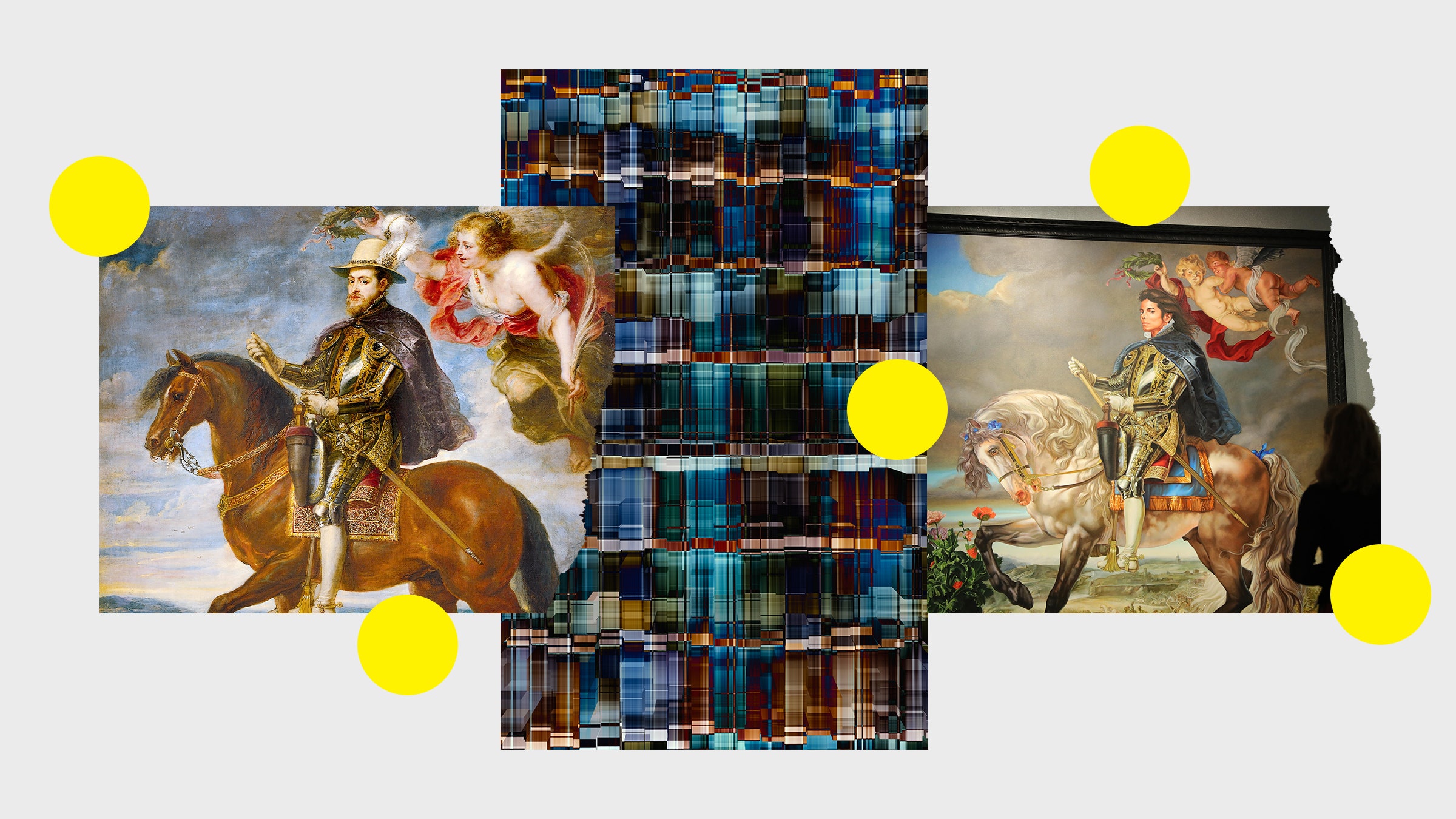
Human Art Already Has So Much In Common With AI
But drawing inspiration manifests in varying degrees, some toeing far closer to plagiarism than others. There's a difference between transforming a trope into something new and duplicating someone else's iteration and calling it unique. There's a difference between imitating someone’s style for practice or in homage and copying it to pass off as your own. And there's a difference between sampling components of someone's work with their acknowledgement and wholesale appropriation without due credit.
In July 2022, outcry regarding a painting of a Black cowboy by artist Gala Knörr brought attention to its similarity to an uncredited film still by the artist dayday. Knörr eventually apologized, stating that her work is “based on many images and media” and her excluding credit was “not ill-intentioned.” The Guggenheim Bilbao ultimately exhibited the pieces side by side, showing and linking the source of inspiration to, ironically, foster reflection on Black erasure.
All artists base their work on many sources—it's why many can rattle off a list of their influences and inspirations on command. Far from diminishing, identifying these echoes enriches an oeuvre by putting it in conversation with the creative genealogy that made it possible. Imitation is how we learn to create, and incorporation is how we learn to create well. The central issue plagiarism raises isn't a philosophical question about what constitutes originality or gatekeeping—it's whether we value the people behind a source of inspiration, without which all other works based upon it would not exist. Nor does the legality of an act mean it's ethical—it only makes plain what those in power deem worthy of protection.
Some AI users express reservations about crediting their sources. One Reddit user based a custom model on artist Deb JJ Lee's work but named it after animation studio Kurzgesagt because they “didn't know what to call it.” The account was deleted after Lee discovered their art was used without permission or acknowledgement.
By obfuscating sources, users render transparent the mode of engagement AI inherently advances: one founded on mass consumption, where quantity itself is quality. Where intent is obsolete, because the end product justifies the means. Where credit is deprecated, because everyone is an interchangeable part. Where collaboration is eliminated, because the act of creation is estranged into a black box. Where the profession of artist is obviated—save for the elect few—because the product is ultimately privileged over the person.
A fair number of stories on AI and the future of creativity end with the author describing or transcribing their experience with a model. Often this is done with an air of morbid curiosity, wary apprehension, or dismissive ridicule—expressing both unease and self-reassurance over the future of their profession.
But why give the algorithm any more space than it already has? Why not give credit where credit is due?
This essay is itself a form of web weaving, composed of threads both self-evident and subsumed. Hidden within its warp and weft lie, among others: an elementary school teacher's basic essay structure; Yuan and Yu's Can't Help Myself; Dafen Village; a high school teacher's lesson on strategic paragraph breaks; Benjamin’s aura; Lil Nas X avenging Mr. Van Gogh; a friend's long memory; Gaiman's The Sandman; Deleuze's multiplicity; an author who writes fanfic at 3 am; an editor’s deft eye; Carson's conception of eros; Weil's notion of love; years of thoughts and experiences tangential, parallel, and asymptotic to this subject.

